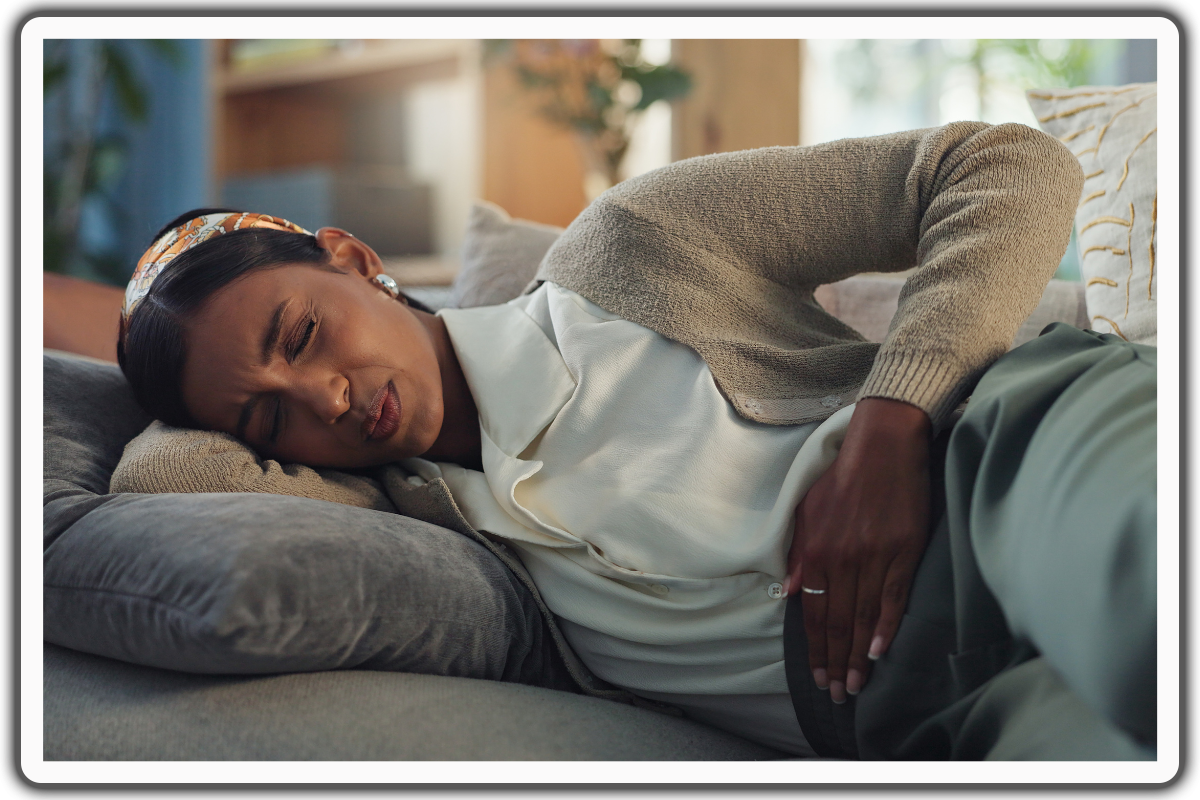
Pelvic Pain in Women: Home Remedies that Work
Pelvic pain in women can have many causes like menstrual cramps, endometriosis, PID, painful bladder syndrome, and IBS. To manage this pain, try lifestyle changes such as eating better, exercising regularly, and using heat or cold therapy.
Relaxation methods like mindfulness, meditation, and deep breathing, along with natural remedies like herbal supplements and essential oils, can help too. Pelvic exercises like pelvic tilts, child's pose, happy baby, bridge, and seated cat-cow can make the pelvic muscles stronger and more flexible.
Adding these to your daily routine can improve pelvic health and reduce pain.
Understanding Pelvic Pain
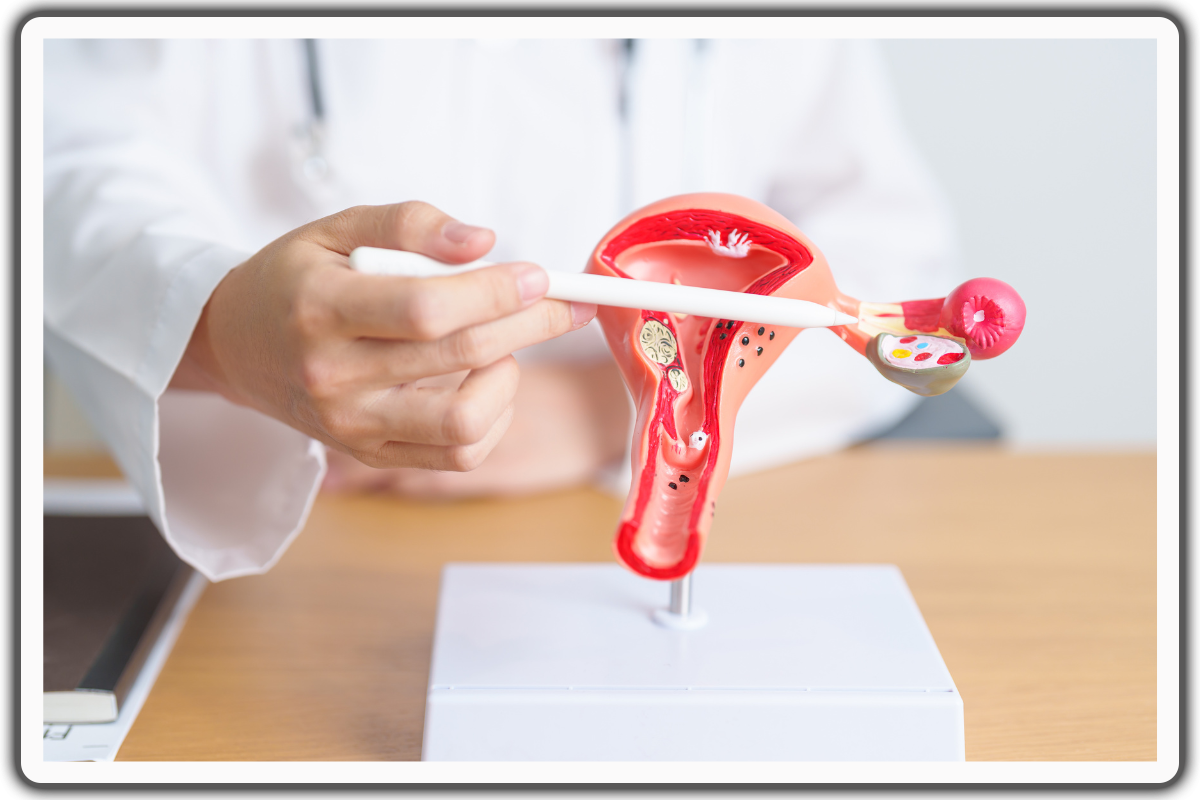
Pelvic Pain refers to pain that occurs in the lower abdomen and pelvis. It can be categorized into two main types:
- Acute pelvic pain: Acute pelvic pain is sudden and severe, often indicating an urgent medical condition that requires immediate attention. This type of pain is usually short-term, lasting less than six months, and may be associated with specific events or injuries. Acute pelvic pain can result from conditions such as ectopic pregnancy, ovarian torsion, or acute pelvic inflammatory disease (PID).
- Chronic Pelvic Pain: Chronic pelvic pain [¹] persists for six months or longer, often becoming a complex condition that can be challenging to diagnose and treat. It can vary in intensity and may be constant or intermittent. It often interferes with daily activities and the standard of living. Conditions like endometriosis, interstitial cystitis, and chronic PID can cause chronic pelvic pain.
Common Causes of Pelvic Pain in Women
Pelvic pain symptoms can arise from various sources, including reproductive, gastrointestinal, urinary, and musculoskeletal systems. Here are some common causes:
Menstrual Cramps
Menstrual cramps, known as dysmenorrhea [²], are painful sensations experienced during menstruation. These cramps are caused by the squeezing of the uterine muscles as the body expels the uterine lining.
The pain typically manifests as lower abdominal discomfort but can also extend to the lower back. In addition to abdominal and back pain, menstrual cramps are often accompanied by other symptoms such as headaches and nausea.
These cramps can vary in intensity, with some women experiencing mild discomfort while others endure severe pain that can interfere with daily activities.
Endometriosis
Endometriosis occurs when uterine-like tissue grows outside the uterus. This abnormal tissue growth can occur in fallopian tubes and other organs within the pelvis.
The misplaced tissue behaves like regular endometrial tissue, thickening, breaking down, and bleeding with each menstrual cycle. However, because this tissue has no way to exit the body, it becomes trapped, leading to inflammation and pain.
Common manifestations of endometriosis include pain during intercourse, chronic pelvic pain, and severe menstrual cramps. The pain within the pelvic organs can significantly impact a woman's life satisfaction, often requiring medical intervention for management and relief.
Pelvic Inflammatory Disease (PID)
Pelvic Inflammatory Disease (PID) [³] is an infection that affects the female reproductive organs, including the uterus, fallopian tubes, and ovaries. This condition is often caused by sexually transmitted infections (STIs), such as chlamydia or gonorrhea, which spread from the vagina to the reproductive organs.
PID can lead to a variety of symptoms, including lower abdominal pain, fever, unusual vaginal discharge, and pain during intercourse. These symptoms can range from mild to severe and may develop gradually or suddenly.
Untreated PID can cause serious complications, such as chronic pelvic pain, ectopic pregnancy, infertility, and making prompt medical treatment essential.
Painful Bladder Syndrome
Painful bladder syndrome, also known as interstitial cystitis, is a chronic condition characterized by persistent bladder pressure, bladder pain, and sometimes pelvic pain. The condition results in inflammation of the bladder wall, which can lead to scarring and decreased bladder capacity.
Individuals with interstitial cystitis often experience an urgent need to urinate, frequent urination, and pain during urination. These manifestations can vary in severity and may worsen during certain activities or times, such as after consuming specific foods or drinks.
The chronic nature of interstitial cystitis can significantly affect a person's life, making it important to seek medical treatment for symptom management and relief.
Irritable Bowel Syndrome (IBS)
Irritable Bowel Syndrome (IBS) is a gastrointestinal disorder impacting the large intestine, causing a variety of uncomfortable symptoms. Individuals with IBS often experience abdominal cramping and pain, which can be accompanied by bloating and noticeable changes in bowel habits.
These changes can include periods of diarrhea, constipation, or alternating between both.
Additionally, IBS can cause pelvic pain, further contributing to discomfort. The severity of symptoms can vary from person to person and can be triggered by certain foods, stress, or other factors.
Although IBS is a chronic condition, its symptoms can be managed with medical treatments, lifestyle changes, and dietary adjustments.
Pelvic Pain Home Treatment for Female
1. Lifestyle Modifications

Regular Exercise
Engaging in regular exercise is crucial home treatment to ease pelvic pain in female. Activities such as walking, swimming, and yoga can reduce inflammation, improve blood flow, and strengthen the muscles supporting the pelvic region.
These exercises also release endorphins, which are natural painkillers that can enhance mood and overall well-being. Additionally, maintaining a regular exercise routine helps prevent stiffness and muscle tension, contributing to better pelvic health and pain management.
It's important to choose low-impact exercises that do not exacerbate pain and to consult with your doctor before starting any new exercise regimen.
Dietary Changes
Diet modification is an effective home treatment to manage pelvic pain in female. Incorporating anti-inflammatory foods, such as green leafy veggies, berries, nuts, and fatty fish, can alleviate pain and lessen inflammation.
These foods are high in essential nutrients and antioxidants that support overall health and reduce pain symptoms. Conversely, avoiding processed foods, sugary snacks, caffeine, and alcohol can prevent inflammation and pain exacerbation.
Drinking enough water is vital for maintaining pelvic health. A balanced diet tailored to reduce inflammation can significantly improve signs and symptoms. It can also enhance the quality of life of women experiencing pelvic pain.
2. Pain Management Techniques

Heat Therapy
Heat therapy is a widely recommended home treatment for managing pelvic pain in female. Applying heat through heating pads, warm baths, or heat wraps can help relax the muscles and increase blood flow to the pelvic area, which in turn reduces pain and discomfort.
The warmth helps to soothe tense muscles, reduce muscle spasms, and alleviate cramping associated with conditions like menstrual pain or endometriosis. It is important to use heat therapy safely, ensuring the temperature is not too high to avoid burns and limiting application to 20-30 minutes at a time.
Regular use of heat therapy can provide significant relief from chronic pelvic pain.
Cold Therapy
Cold therapy is another effective pain management technique for pelvic pain in women. Applying ice-wrapped or cold packs to the affected area can help lessen the inflammation, numb sharp pain, and decrease swelling.
Cold therapy constricts blood vessels, which can alleviate pain from acute injuries or inflammation. It is particularly useful after exercise or during flare-ups of conditions like pelvic inflammatory disease.
To use cold therapy safely, avoid applying the ice directly to the skin and limit application to 15-20 minutes at a time to prevent frostbite or skin irritation. Alternating between cold and heat therapy can also be beneficial in managing chronic pain.
3. Relaxation and Stress Management

Mindfulness and Meditation
Mindfulness and meditation are helpful tools for managing pelvic pain by addressing the impact of stress on the body. Stress can aggravate pelvic pain by causing muscle tension and increasing the perception of pain.
Practicing mindfulness helps individuals stay present and aware of their body without judgment, reducing stress and anxiety levels. Focusing on the breath, repeating a calming mantra, and other meditation techniques can help calm the mind and relax the body.
There are several apps available, like Headspace and Calm, which provide guided meditations and mindfulness exercises tailored to beginners and experienced practitioners alike. Regular practice of mindfulness and meditation can lead to long-term reductions in stress and pelvic pain.
Deep Breathing Exercises
Deep breathing exercises are also an effective method to relieve pain and reduce stress. By taking slow, deep breaths, you can activate the body's relaxation response, which decreases muscle tension and promotes a sense of calm.
This technique helps improve oxygen flow and may not treat pain directly but can interrupt pain signals. To practice deep breathing, find a comfortable position and inhale slowly through your nose, allowing your abdomen to expand.
Hold your breath for a few seconds, then exhale slowly through your mouth, letting your abdomen fall. Repeat this cycle for several minutes. Consistently incorporating deep breathing exercises into your routine can provide significant relief if you experience pelvic pain and enhance overall well-being.
4. Natural Remedies
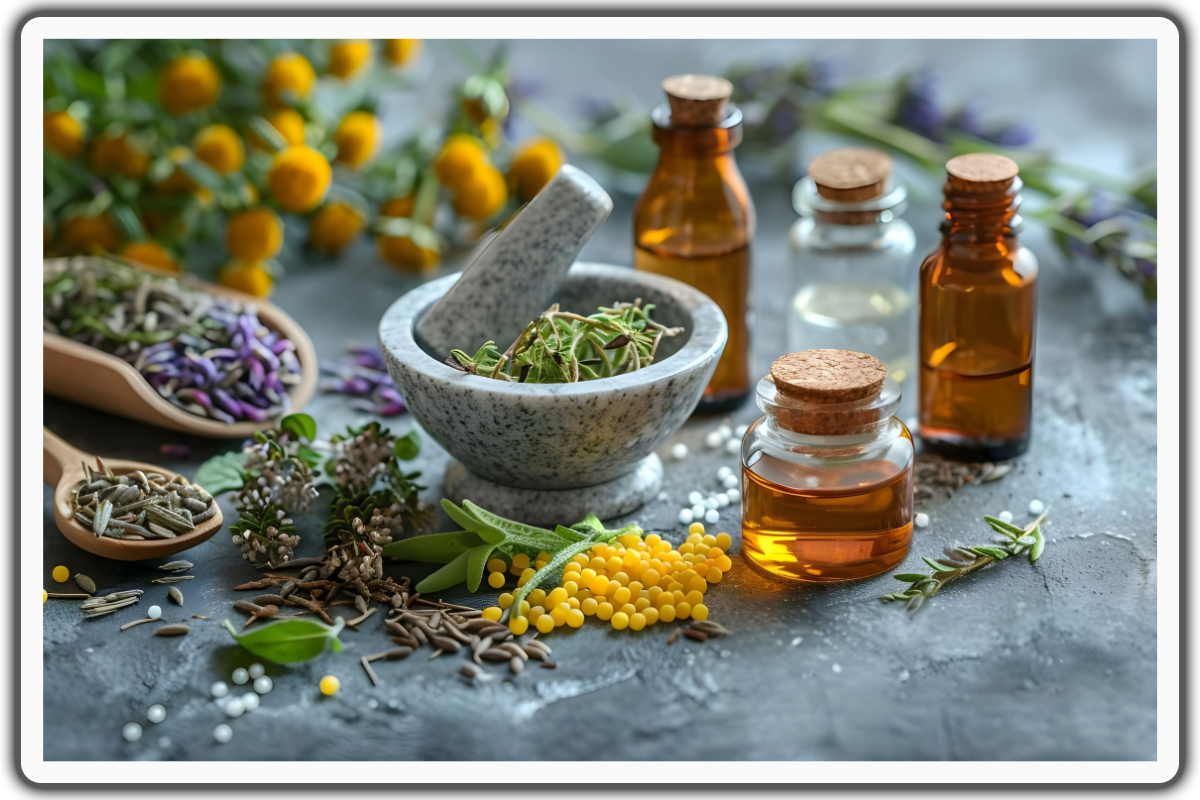
Herbal Supplements
Herbal supplements can be a practical, natural remedy or home treatment to reduce pelvic pain in female. Common herbs such as ginger and turmeric are known for their anti-inflammatory properties, which can help relieve inflammation and pain in the pelvic region.
Ginger contains compounds that inhibit inflammatory pathways, while turmeric’s active ingredient, curcumin, has potent anti-inflammatory and antioxidant effects. However, it is important to take precautions and consult a medical provider before using herbal supplements, as they can interact with other prescriptions and may not be suitable for everyone.
Proper guidance ensures the safe and effective use of these natural remedies for pelvic pain relief.
Essential Oils
Essential oils offer another natural approach to managing pelvic pain. Popular essential oils like chamomile and lavender are known for their pain-relieving and calming properties.
Lavender oil can help relieve pain and promote relaxation, while chamomile oil has anti-inflammatory effects that can alleviate discomfort. Essential oils can be safely used in various ways, such as adding a few drops to a diffuser to inhale the soothing aroma or reducing the concentration of these oils with a carrier oil for topical use.
It is important to patch test before applying to the skin to avoid allergic reactions. Follow guidelines for safe use and to maximize the benefits of these products for pelvic pain relief.
5 Pelvic Exercises
1. Pelvic Tilt
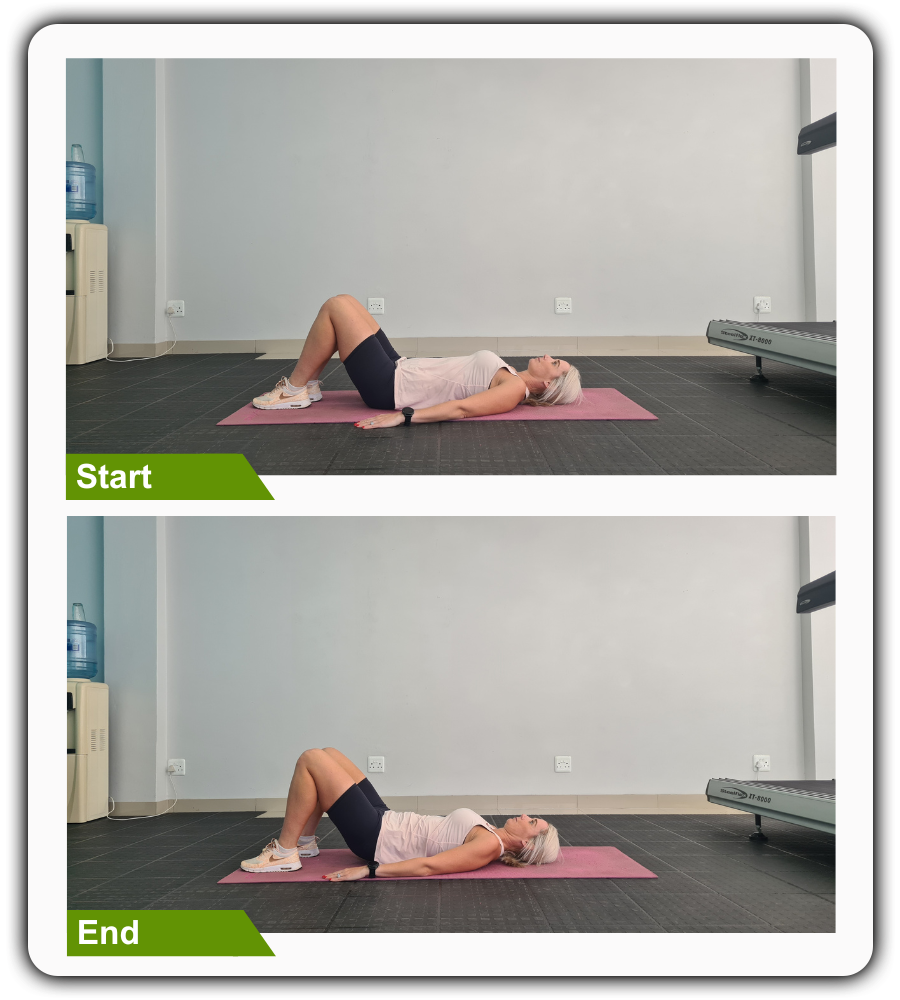
Lie on your back on the floor with your knees bent and feet flat on the floor. Place your arms on your sides with palms facing down, relaxing your upper body. Exhale, engaging your core. Tilt your pelvis upward, imagining pulling your navel towards your spine. Hold this position for several deep belly breaths, in through your nose and out through your mouth. Inhale, allowing your pelvis to return to its neutral position. Repeat the movement.
2. Child's Pose
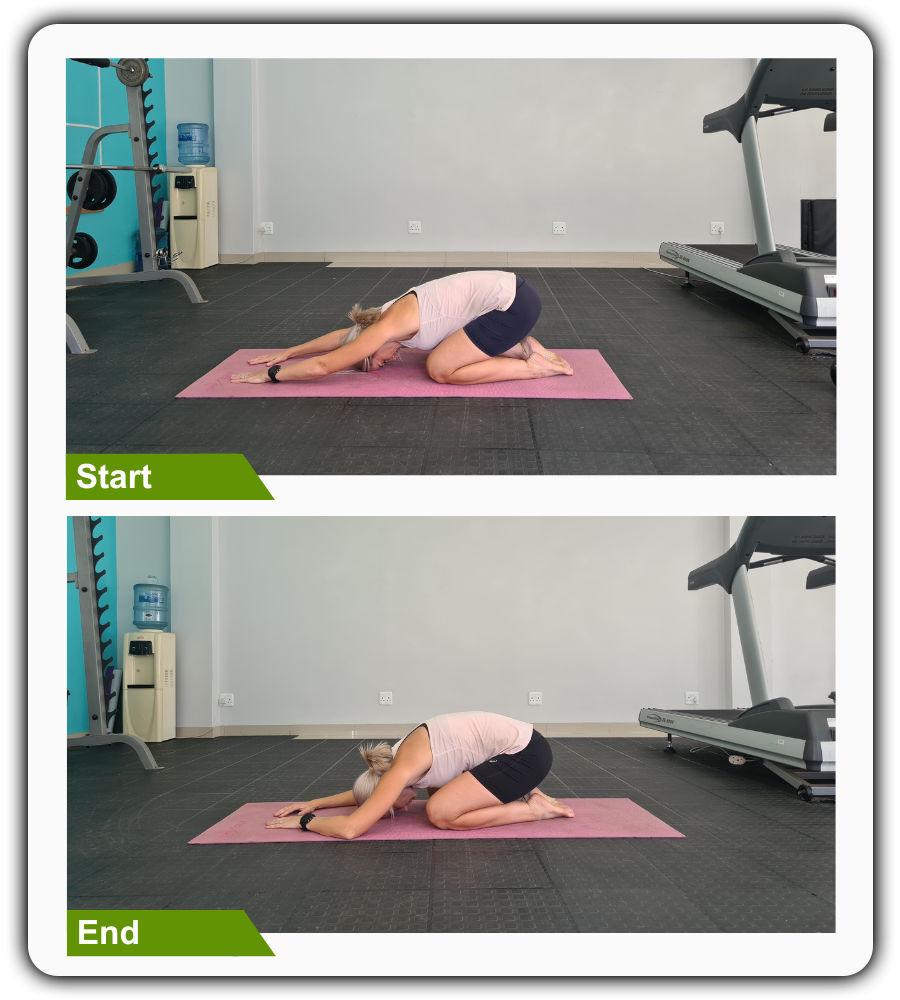
Begin in an upright kneeling position on the floor with your knees wider than shoulder-width apart, maintaining good alignment with your head, shoulders, and hips. Tighten your abdominal area. Shift your hips back to your feet and extend your arms in front of you. Drop your forehead to the floor, relaxing your mid-back area for a light stretch. Depending on your comfort level, deepen the stretch by bending your elbows to lower your seat further. Hold this position for several deep belly breaths, in through your nose and out through your mouth.
3. Happy Baby
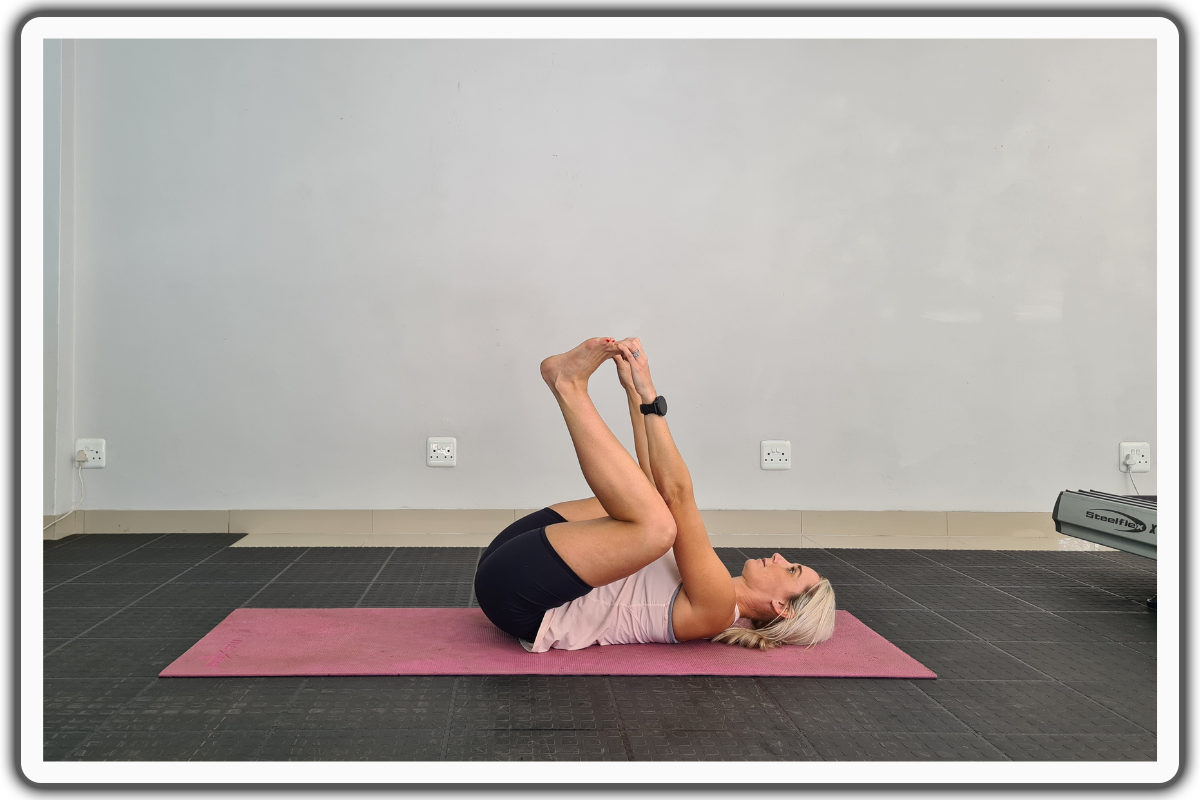
Lie on your back on the floor with your knees bent and feet flat on the floor, maintaining good alignment with your upper body. Lift your legs and hold your toes with each hand, pulling down toward the shoulders with your knees wide apart. Hold the position for several deep belly breaths, in through your nose and out through your mouth.
4. Bridge
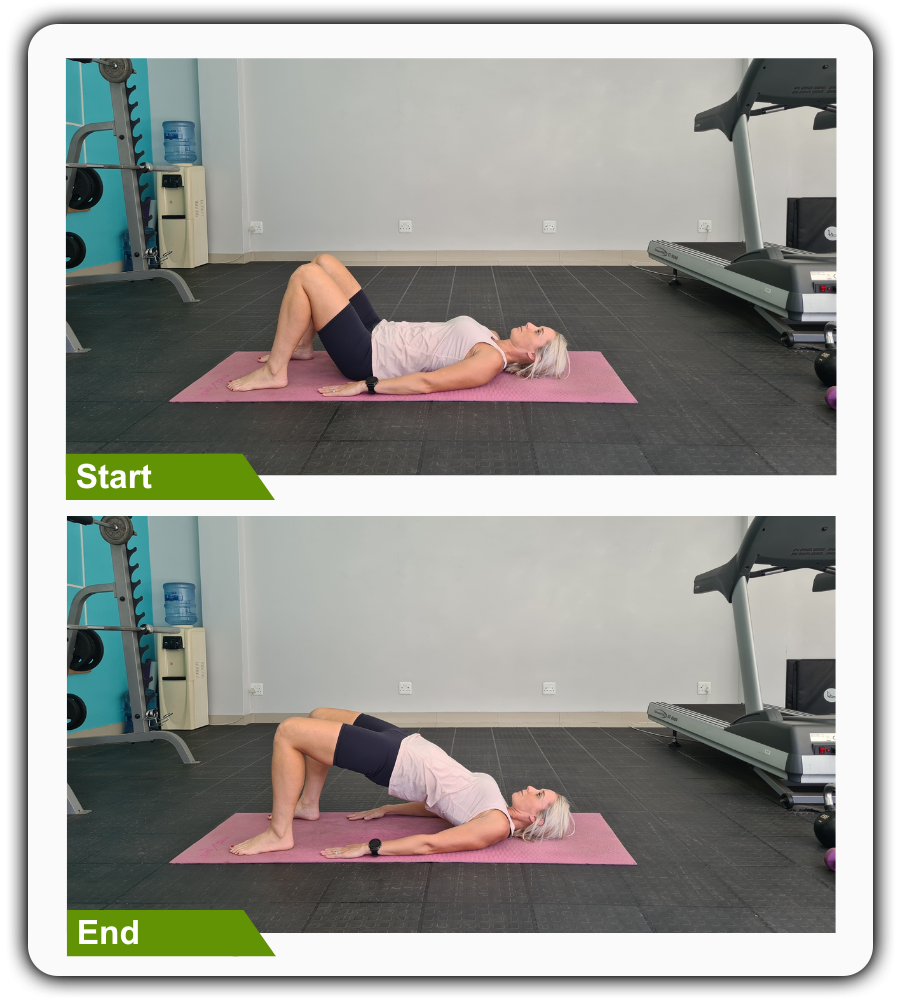
Lie on your back on the floor with your knees bent and feet flat on the floor, maintaining good alignment with your head, shoulders, and hips. Place your arms on your sides. Engage your core and push from your heels to lift your hips, squeezing your glutes at the end position. Hold this position for several deep belly breaths in through your nose and out through your mouth. Slowly lower your hips to return to the starting position. Repeat the movements for 12 repetitions. Start with 1 set of 5 repetitions.
5. Seated Cat-Cow
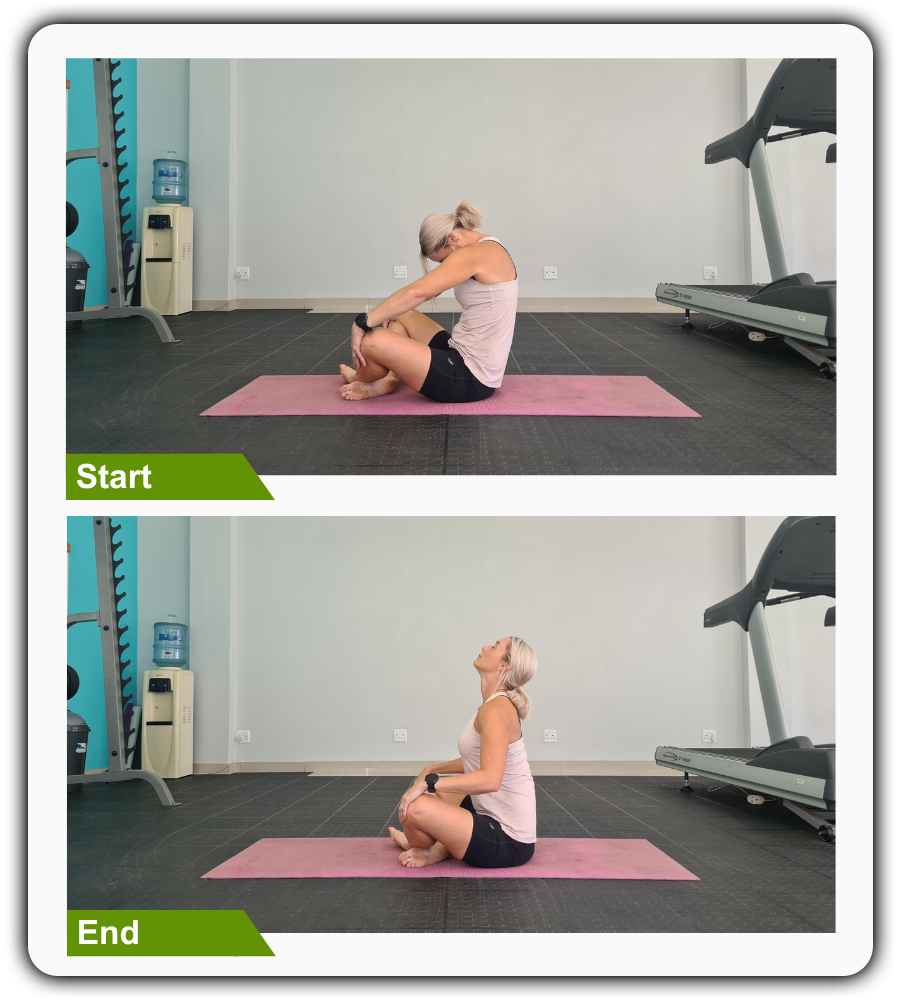
Begin in an upright sitting position on the floor with your legs crossed, maintain good alignment of your head, shoulders, and hips. Place your hands on your knees and contract your abdominal area. Slowly round out your mid-back as you drop your head toward your chest. Alternate by lifting your head and arching your mid back. Repeat the movement, alternating directions. Complete 5 repetitions.
Conclusion
Pelvic pain in women can significantly impact daily life and well-being, making it essential to understand its causes and explore effective home remedies. Acute pelvic pain often requires immediate medical attention, while chronic pelvic pain may need a comprehensive and prolonged management approach.
Conditions such as menstrual cramps, endometriosis, pelvic inflammatory disease, painful bladder syndrome, and irritable bowel syndrome commonly contribute to pelvic pain. Home treatments can effectively manage and alleviate pelvic pain.
Lifestyle improves overall health and reduces pain symptoms. Pain management techniques like heat and cold therapy provide immediate relief, while mindfulness, meditation, and pelvic floor physical therapy help address stress-related pelvic pain.
By combining these home remedies and techniques, women can effectively manage pelvic pain, improve their quality of life, and support overall well-being.
References
1. Dydyk, A. M., Gupta, N. (2023). Chronic Pelvic Pain. StatPearls
https://www.ncbi.nlm.nih.gov/books/NBK554585/
2. Naggy, H., Carlson, K., Khan, M. A. B. (2023). Dysmenorrhea. StatPearls.
https://www.ncbi.nlm.nih.gov/books/NBK560834/
3. Jennings, L. K., Krywko, D. M. (2023). Pelvic Inflammatory Disease. StatPearls.
https://www.ncbi.nlm.nih.gov/books/NBK499959/
